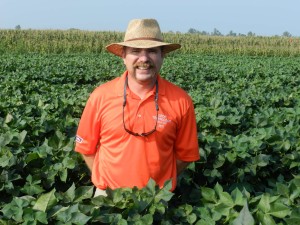Palmer Amaranth: ‘Driver Weed’ Control Doesn’t Come in a Jug

Want an alarming stat? Here goes …
“Horseweed, or marestail, was first discovered 10 years ago. Ten years later, we have nine different glyphosate-resistant weed species in the Mid-South, Southeast and now even Texas,” says Larry Steckel, a University of Tennessee weed scientist.
“As you take a look at it, we’re basically averaging new species per year,” he adds. “The bottom line is that it’s making weed control a lot more complex.”
Of the nine, Steckel calls glyphosate-resistant Palmer amaranth the “driver weed.”
“Even though we have a number of different weed species that are resistant to glyphosate, there is no doubt that glyphosate-resistant Palmer amaranth is the driver weed. In many of our fields, it’s about the only weed you will find. That makes it the driver weed,” he explains. “So we have to contend with this one because it’s going to be trouble from here on out. We had hoped that things were getting better, not worse, but things are getting tougher.”
The spread of Palmer pigweed in the Mid-South and Southeast has been explosive and frightening. It reared its ugly head in Georgia in ’05 and headed westward quickly. The very next year, it was confirmed in the Mid-South.
“You can fast forward to where we are today and Palmer pigweed is in nearly 300 counties. In some places it’s awful, and in others it’s just getting started,” says Steckel. “If you’re in an area where it’s getting started, anything you can do to prevent it from spreading is well worth the effort.”
Weed scientists have warned for some time that the spread of glyphosate-resistant Palmer amaranth is relatively simple because one large plant can produce millions of seed. They also say that if you have Palmer amaranth at all, assume it’s glyphosate resistant and start a management program as soon as possible. Even better, control it before it sees the light of day. And Steckel says go back to the future. He sings the praises of the Willmar hooded sprayer and residual herbicides.
“The Willmar hooded sprayers have been given a tryout. And they are terrific tools for control of Palmer pigweed,” he explains. “They are designed for contact herbicides like Gramoxone, Valor and Direx tank-mixed with MSMA. There’s just no other way to manage these weeds without running hoods. And one thing about the newer hoods is that they are designed for contact herbicides. They have three nozzles in them and you get good coverage. The older hoods were designed for Roundup and they were fine for what they did, but we’re past that.”
Residuals and More Residuals
Two separate weed-control transgenic-traits – Roundup Ready Flex and LibertyLink – can be used in a rotation, because they have different modes of action. But both need the help residuals provide. Steckel recommends pre-emergence products like Cotoran or Caparol, followed by an overlap with another residual.
“I don’t care if you’re using a Roundup Ready system, or a LibertyLink system, or conventional, you’ve got to use residual herbicides,” says Steckel.
The problem with residuals, however, is that they require moisture for activation. Even so, it pays to roll the dice – the odds are with you.
“We went back and looked at our weather patterns,” says University of Arkansas weed scientist Ken Smith. “And we know that within the cotton-planting window, we have about an 80% chance of getting a rain within seven days. And most of our residual herbicides will lay out there for two weeks. So, we’ve got some room here.”
What’s the Difference?
Steckel says he receives many calls on how to manage glyphosate and glufosinate (Liberty) systems. The easy answer is: differently.
“There three are things they have in common – they’re both non-selective, they don’t have a residual component and they both start with a ‘G’. Other than that, they’re completely different and have to be managed completely differently.”
There are new traits coming with dicamba and 2,4-D tolerance. But neither is the silver bullet, and both are a few years away from being cleared and marketed.
So, Steckel says, “I contend at this time, that the complete answer to Palmer pigweed cannot be poured out of a jug. If we use a system with pre-emergents, and stay with the hooded sprayers, we’re going to be better off in two years.”








